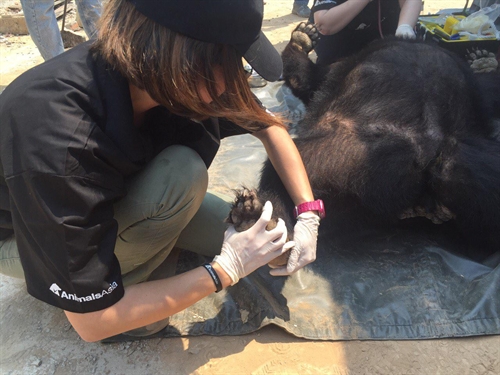 Society
Society

An Endangered Asiatic black bear was rescued in the central city yesterday after a household released it to Việt Nam’s Bear Rescue Centre.
 |
| An Asiatic blackbear is examined in Đà Nẵng City by Animals Asia. The 13-year-old bear will be sent to the Bear Rescue Centre in Tam Đảo in Vĩnh Phúc Province. Photo courtesy Animals Asia |
ĐÀ NẴNG (VNS) — An Endangered Asiatic black bear was rescued in the central city yesterday after a household released it to Việt Nam’s Bear Rescue Centre.
The NGO Animals Asia said the female bear, 13 years old and 170kg, was kept with a family in Hòa Vang District, Đà Nẵng City since it was small. The bear was given an identification card for management in 2005.
This bear brings Animals Asia’s bear rescue total to 162 in Việt Nam. It was examined by experts from Animal Asia before being sent to the Bear Rescue Centre in Tam Đảo in Vĩnh Phúc Province, 800km from Đà Nẵng.
Animals Asia veterinarian Weng Nash said the bear was quite well, but its legs were calloused from being held in a steel cage, while its molar teeth were decaying.
Animals Asia also asked the central city’s sub-department of forest protection to rescue all bears found living in households.
According to Animals Asia, 41 bears were rescued last year. Thirty-three were in Quảng Ninh Province.
More than 1,200 bears are kept at 430 private farms in Việt Nam, according to a report from Việt Nam’s Forest Protection Agency.
Two years ago, cameras installed by the World Wildlife Fund (WWF) recorded an Asiatic black bear, also called a moon bear, in the wild in Quảng Nam Province.
The discovery of the Asiatic black bear, which is listed by IUCN as an endangered species, is believed to be an important indicator of conservation efforts on the ground to improve the quality of forests, ranked as one of the world’s richest biodiversity spots. — VNS




